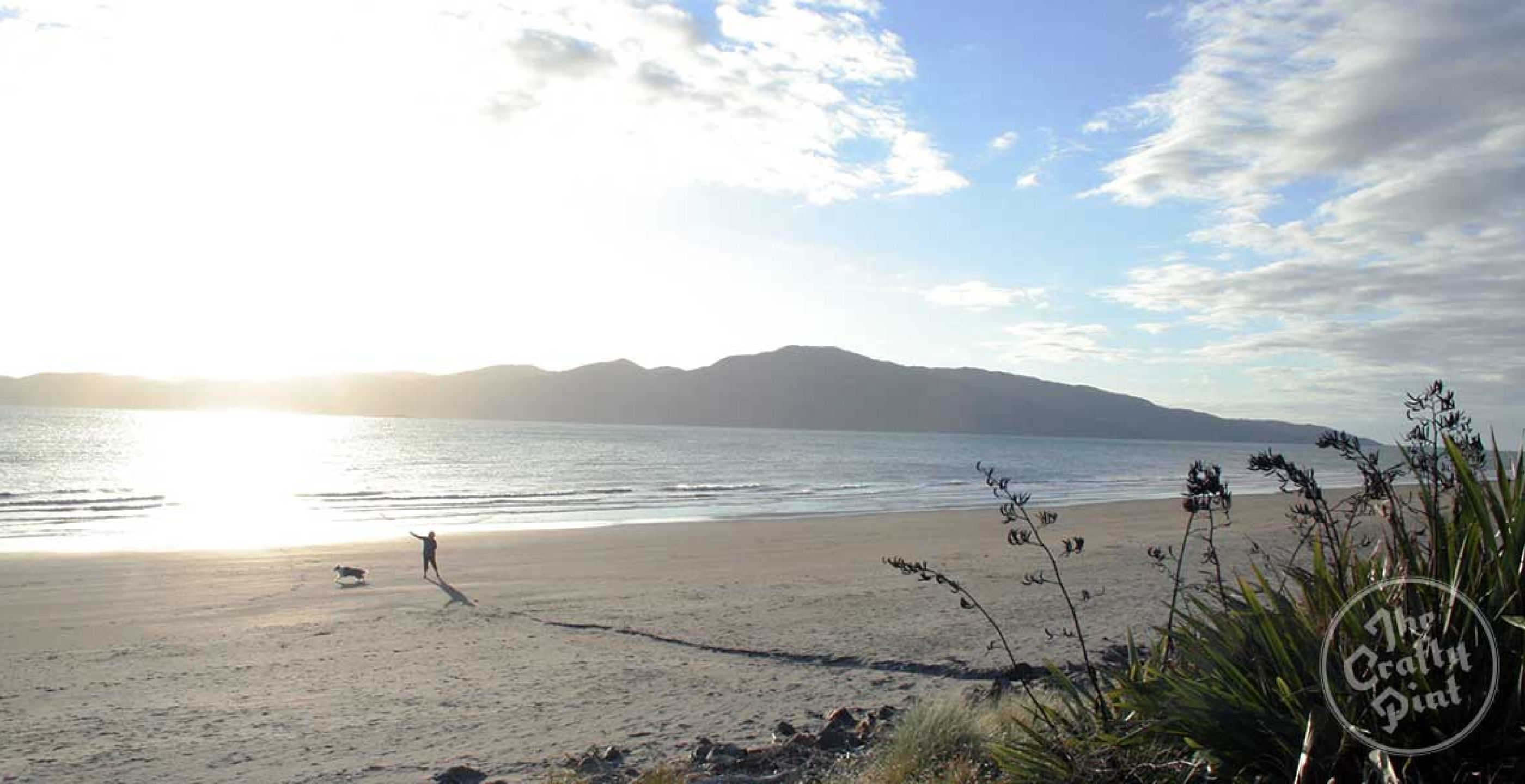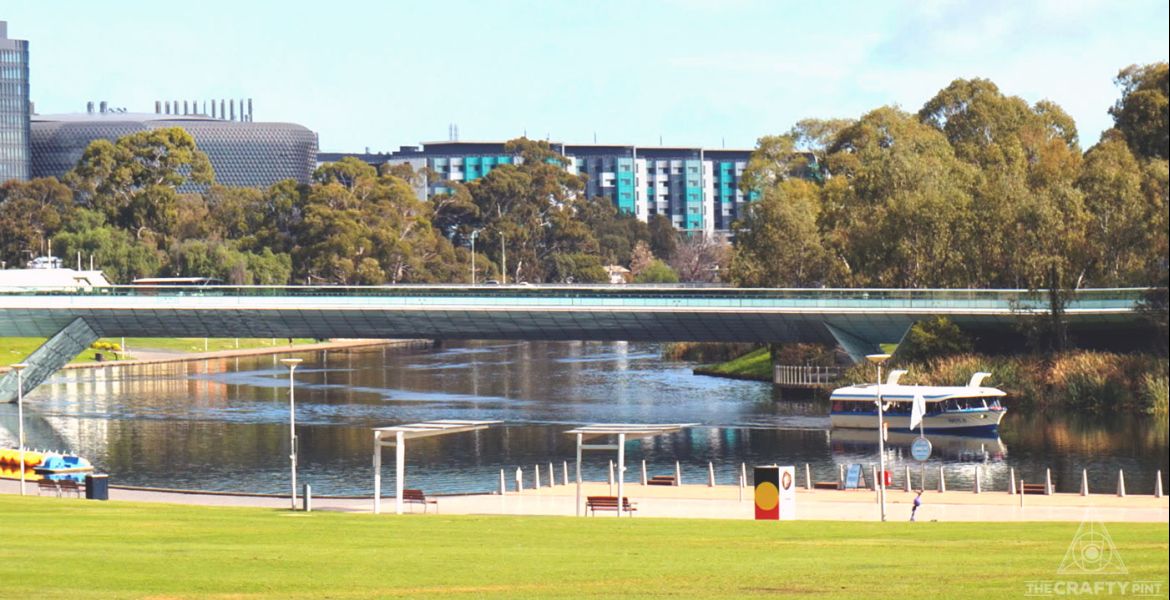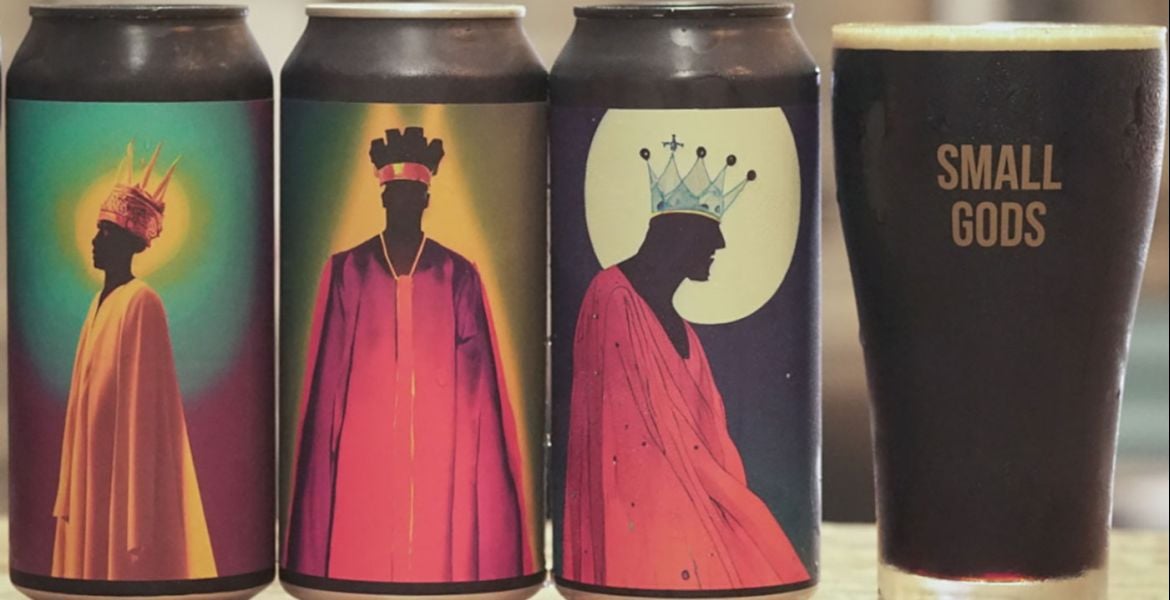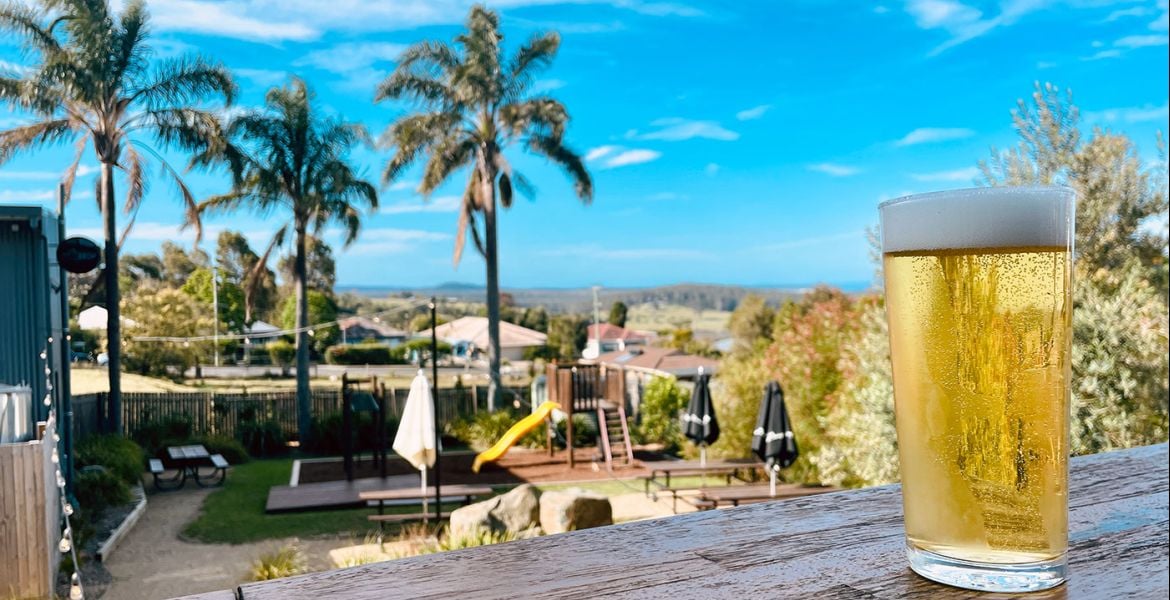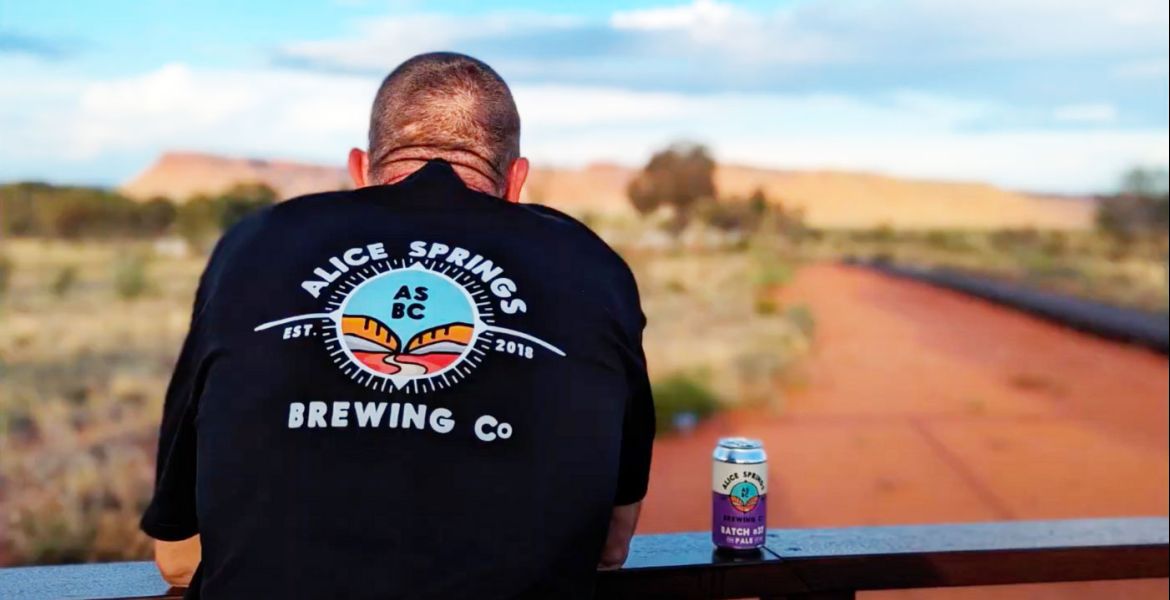Waikanae is a nice place. It’s quiet, close to the beach and lush with bush. Perhaps that’s why so many people come here to die.
There’s nothing morbid about that. It really is nice. It just happens to have a lot of retirement villages. But, equally, it has been, and is increasingly, an up and coming place for young families and businesses. Only 60 kilometres north of Wellington, Waikanae is close enough to the capital to be a daily commute.
Many do it and the road is often clogged with cars, though there is a railway option. New Zealand’s rail system is largely inadequate and for a long time the section through Waikanae was no exception – as recently as five years ago commuter trains from the capital couldn’t come out this far. But now, with a refurbished station and new trains, it sits proudly at the end of the passenger line. However, so many people now drive to the station to then take trains onwards to the city that the town’s only pub was knocked down to make way for more car parks. Joni Mitchell once penned a good line about that kind of carry on.
Waikanae is small, home to only ten thousand people, but it has surprising girth. Bumped up against the Tararua Ranges in the east, it stretches for several flat kilometres westward toward the sea. It is when standing on the sand there that you get the best view of the icon of this part of the coast: Kapiti Island (pictured top).
The island sits tantalisingly close to the shore but, crucially in the grander scheme, just far enough away. Pest-free thanks to a decades-long conservation effort, the long, tall and narrow Kapiti is one of New Zealand’s foremost nature reserves and wildlife sanctuaries, acting as a refuge for many endemic species which have been lost forever or are teetering on the brink on the mainland. Such is the precious nature of this place that entry is by permit under strict conditions, but everyone that has been will tell of what a marvellous experience it is.
It is from the north end of this island that North End Brewing in Waikanae takes its name. It is a supremely local reference, a spot of significance and, frankly, it sounds like a brewery name. At least, it sounds like a good old fashioned English brewery name. Which is probably why Kieran Haslett-Moore likes it.

He is the head brewer at North End, a self-confessed Anglophile and, as his recent CV attests, an absolute devotee to beer and some of the best things closely associated with it: cheesemonger at Wellington’s gourmet food mecca Moore Wilson’s; beer specialist at legendary liquor store Regional Wines and Spirits; beer writer of some regard; and a founding member of the Society Of Beer Advocates (SOBA), perhaps New Zealand’s most beautifully ironic acronym.
While the brewery was only officially commissioned in August 2015, Kieran had spent several of the preceding years brewing cuckoo-style – essentially flying in and borrowing tank space – at other breweries: Townshend near Nelson; Four Avenues in Christchurch; Fork & Brewer, Panhead and Kereru in Wellington and surrounds. How, then, did he end up out in Waikanae?
“I’m originally from Wellington,” says Kieran, “but I’ve been coming to Waikanae my whole life. My grandfather’s from here so I’ve always had a foot here too.
"My business partners have the Long Beach Tavern at Waikanae Beach, as well as the Olde Beach Bakery. They run businesses in Waikanae and wanted to set up a brewery here. Originally the idea was just a tiny little brewery in a container out the back of their bakery, but I argued that’d never pay for itself and slowly massaged them upwards. Five years later, here we are.”
Where that is and what they have built is unlike anything else for some distance. The site operates under the name Salt and Wood Collective and it consists of an American barbecue restaurant with the brewery out the back and something of an intangible cellar door between the two.
The dining component, which only opened in April this year, possesses an immense smoker which Kieran reckons may be the biggest of its kind in the country; with capacity for 208 chickens it’s hard to imagine that it wouldn’t at least be a contender. Naturally, the bar serves beer made on site and a striking eight tap system lets you fill your own vessels for takeaway. From inside the restaurant and behind a floor-to-ceiling sliding door you have full view of what’s happening in the brewery, with the canning machine front and centre.
“We were one of the early, but not the earliest, can pioneers in the country,” says Kieran.
“It was a good time to come in but Hot Water Brewing and Garage Project had done a fair bit of work to knock down barriers. Our machine is just the right size for us and with the windows into the restaurant it’s interesting for people to look out and see what’s happening.”

North End’s beer range is, as Kieran puts it, “schizophrenic”.
It begins with some mass market appeal by way of a pilsner, the Kolsch-esque Pacific Blonde and Super Alpha, which tends towards Pacific pale ale territory. All distinct thanks to exclusive use of New Zealand hops, these are beers which are friendly to Waikanae’s beach vibe and its largely new-to-craft-beer market. Then there is an equally approachable but very different line paying homage to Kieran’s love of English beers by way of three different strengths of bitter: Omahi Special Bitter (named for the street adjacent to the brewery), Best Bitter and the Amber Ale, all three of which you’ll often find being served on hand pump.
“Those aren’t at the forefront of craft beer excitement,” says Kieran, “but there is a market for it, particularly out here. We’re not downtown Wellington so having those approachable styles is really important. It’s a niche but a good one to be in.”
As it so happens, North End is operating at the forefront of craft beer excitement, though you see little evidence of it when peering into the brewery. For that you will need an invitation to head around the corner where a nearby warehouse houses North End’s barrel-ageing program. This is the "wood" component of the Salt and Wood Collective (the "salt" being borne of the proximity to the sea).
The first three beers under the Salt and Wood label have been released to some acclaim in local beer circles; Baby Grand is a Flemish red ale that underwent 18 months of solera-style ageing in Cabernet Sauvignon barrels, Rivage Brux Reserve is a farmhouse style ale aged in Sauvignon Blanc barrels, and Cuvee Du Moor is a 13 percent ABV Belgian quadrupel aged in Pinot Noir barrels that were naturally infected with Brettanomyces.

This is the pointy end of beer geekery and North End is well placed to be helping lead it locally, with both time and scalability on their side.
“For the first releases,” says Kieran, “we had barrels sitting in the room when the brewery was still a construction site, so we were building around them. But that’s the importance of getting these things down as soon as possible.”
The warehouse has the capacity to go up to five barrels in height, allowing plenty of room to expand on the next generation of Salt and Wood releases currently in development.
“Already ageing we’ve got a future batch of Baby Grand and next year’s vintage of Rivage. We’ve done a beer called Blanco which is a 'sherried' barrel pale sour. It’s not using a sherry barrel but one where we take wine barrels, clean them vigorously and season them with bottles of sherry to get some of the sherry characters.
“We used a sourdough technique where we took some wort, put it into my old home brew mash tun, let it sit for a day, put in in the chiller overnight and the next day put it in some kegs and let it sit for a few weeks. It sat in the corner smelling pretty interesting, but it didn’t grow any nasty moulds so we pitched that into barrels. That base beer has gone into other barrels and is fermenting spontaneously. The spontaneous [batch] will then be turned into all sorts of things.”
This sour beer project is one that’s highly experimental in nature and there are relatively few other breweries in New Zealand doing anything similar at any sort of scale (Moa and Hallertau have, for some years, produced an eclectic range of sour beers and Garage Project has begun work at its Wild Workshop), meaning the market remains very niche. For now.
“It’s where a lot of my passion is and it’s a rising thing in New Zealand,” says Kieran. “We’re not really into the IPA thing as that’s not where my passion or skills are, but the place where I can do some exciting stuff that also helps us stand out from the crowd is the sours.
“We’ve also done New Zealand’s first sour beer membership program. It’s quite a thing in the US where you get a club of people to sign up and pre-pay and they get a few cases of beer a year. Some are general releases but quite a few are done just for the pub, so they get the rare beers. It’s a small program but it’s good and it gives us money to buy more barrels.”
North End is the only brewery in Waikanae, but there was once another very near here. Founded by brewer Carl Vasta and Wellington publicans Sean Murrie and Fraser McInnes around 2000, it was originally located at Vasta’s home up in the eastern hills along Akatarawa Road. Although it has not been there for several years, they didn’t stop brewing because the beer was bad or unpopular. Quite the opposite.
The venture became so spectacularly successful that it had to move to a much larger site, about ten kilometres down the road at an industrial estate in Paraparaumu. From there it sends beer to just about every decent, half decent and the odd less-than-decent beer retailer in the country; on small town supermarket shelves otherwise dominated by big brands, there is scarcely a finer sight for a beer lover than to spot the unique spiny bottles of the Tuatara brewery.

Despite technically being well outside the city limits, many consider Tuatara a Wellington brewery. When it launched, Wellington had very little in the way of physical breweries – certainly nothing to hint that it would soon become the nation’s self-anointed Craft Beer Capital – and drinkers there lapped up what Tuatara was doing. They paved the way initially with some delightful interpretations of classic beer styles like pilsner, hefeweizen and porter that remained fairly true to style but quite obviously different to most of what was available locally at the time.
After cementing a cult following, Tuatara famously appeared on the Deloitte Fast 50 company list – a measure of the country’s fastest-growing businesses – for three consecutive years, between 2010 and 2012, and in doing so provided something of a publicly recognised business case for how serious the craft beer scene was becoming. Tuatara’s rapid rise naturally fuelled industry speculation that it would, following the sale of Dunedin’s Emerson’s Brewery to Lion Breweries in 2012, be the next independent in line to be purchased by the foreign based duopoly of Lion or Dominion Breweries. Those rumours were knocked on the head in 2013 when just over a third of the business was sold to a local investment firm whose capital investment allowed the brewery to expand production and growth both domestically and overseas. Since then, the Paraparaumu production brewery and cellar door has been joined by The Third Eye, their Wellington bar and microbrewery.
They are still banging out the brews that won them their early fans, but the range has naturally ballooned and become massively diverse. Their New World range is very hop-focused – that it boasts five different regular APAs should give you an idea of its audience – while they have a handful of bigger Belgian beers that get less attention than they deserve – in particular the wonderful Ardennes blonde ale – and there is a perpetual stream of one-offs and seasonals. Tuatara has travelled an awfully long way in a fairly short space of time, but it remains a benchmark for beer in this region.
If you were to drive past the site of the old Tuatara brewery, due east from Waikanae, the incessantly winding Akatarawa Road will eventually spit you out, shaken and stirred, in the Hutt Valley.
Sitting to the north of Wellington harbour there are two parts to this valley, presumably named so as to avoid confusion for even the most simple-minded traveller: Lower Hutt and Upper Hutt. Barring the odd exception remembered mainly by longtime locals – such as the captivatingly named Parrot & Jigger brewpub where Carl Vasta once plied his trade – the wider valley has generally had little to do with brewing. Things have changed considerably in recent years.

There will be few with even a passing interest in beer who do not know the name Panhead. After starting as a one man operation in Upper Hutt in 2013 it has grown at at astonishing rate, even amidst an industry known for the rapid pace of its growth. Along with Tuatara – and perhaps unsurprisingly considering founder Mike Neilson was once a brewer there – Panhead’s beer can seemingly be found everywhere. Beer nerds love it, but not only them.
People previously unknown to craft beer were all of a sudden drinking beautifully fragrant and punchy beers with names like Quickchange and Supercharger, not that they necessarily always knew it; oftentimes people refer to Panhead’s beers by their label colour; “I’ll have the orange Panhead” is a common enough request overheard at bars when ordering an the brewer’s American pale ale.
It is likely to have been that sort of brand recognition and appeal that deemed Panhead an attractive investment for the hungry Lion. The Japanese owned conglomerate officially took ownership of Panhead in July 2016 and the reaction, or rather outrage, to the foreign sale from New Zealand’s craft beer cognoscenti has been relatively muted, particularly in comparison to the uproar when Lion purchased Emerson’s. It has likely been noted that, thanks to a multimillion dollar investment from Lion, Emerson’s has just opened a brand new brewery which allows them to more than double the output of what is almost unanimously agreed as being beer of excellent quality, both before and after the sale. It is difficult to conceive that Panhead would have gone to the negotiating table without that item being an underlined bullet point on the agenda.
On the assumption that quality and price remain more or less unchanged, any argument against the continued purchase of beer from the likes of Emerson’s and Panhead boils down to ownership. No half-reasonable person would wish ill will on a company founder or its employees for striking a deal that might help their business flourish beyond what they could achieve alone, but the issue of independence runs deep.
New Zealand has experienced the effects of a brewing industry being concentrated down to just a handful of owners marketing to the illusion of diversity. The industry is undeniably different nowadays, and the independent brewers collectively more entrenched in the marketplace, but this country famous for its sheep ought to remain wary of the future of the flock when a well dressed wolf comes to call.
But, for all that, should a drinker in Upper Hutt decide that independence is reason enough to dissuade them from buying Panhead’s beer, they have an alternative virtually next door.

Launching at around the same time as Panhead and barely a kilometre apart, American expat Chris Mills and wife Natasha have established the Kereru Brewing Company. Upper Hutt has never seemed a likely place to find any sort of concentration of breweries yet here they are, two pieces of a new local economy.
“The Hutt Valley used to support a lot of industry and a huge amount of it was automotive, like where Panhead is at the old Dunlop factory,” says Chris. “Our building used to be owned by Feltex and produced carpets and flooring. What was their laboratory is now our tasting room. It was built in 1962 and there would have been around 300 people working here in the heyday.
“It’s sad that that’s all gone away. Well, it’s sad in some ways, but it’s also created opportunities for people like ourselves to have proper factory space to make beer. Although there are a lot fewer people working here.”
It may not be an employer on a factory scale but, in fairness, four years ago the place was an empty building not employing anyone. The establishment and growth of Kereru has given several people their start in the beer industry, including Chris.
“I came to New Zealand to be part of the film industry in 2002,” he says.
“We brought our visual effects web design company with us and sought out Upper Hutt because it has high speed internet, easy access to trains and easy access to Wellington. I wanted to work with WETA [Wellington’s famed Hobbit-rearing special effects workshop] and was actually offered a job twice, but turned them down because I’d rather work for myself. But I did my dash in the film industry, burnt myself out and pretty much came to the conclusion that in good times and bad people drink beer, but in bad times they don’t hire freelance digital effects directors.”
Now is very much a good time and Kereru is quietly but steadily finding its place within the local beer landscape.
“We’re producing around 200,000 litres per year,” says Chris, “but we’re still in what I’d call the startup phase, mainly because we don’t know where the plateau is for Kereru in the market.
“It’s pretty hard with so many new breweries as there's only so much retail space available. We haven’t seen a trebling of the population to go with the trebling of the beer industry so we’ve deliberately taken a cautious growth approach, rather than trying to just produce and sell to that. For us it’s more about carefully trying to find our market and work on building the story of who we are.”
Who, or what, they are has a distinctly New Zealand flavour. The name Kereru is taken from a large and gluttonous species of native pigeon which, in addition to its critical role of dispersing seeds too large for other birds to ingest, has a habit of gorging on ripe fruit, sitting in the sun until the fruit ferments then falling intoxicated from trees. A rather apt symbol for a brewery, you might say.

Kereru’s beers are mostly British and European styles but they’re produced exclusively using New Zealand ingredients.
“We don’t use any imported hops or malts,” says Chris.
“From there it’s about exploring what other unique characteristics we can bring to beer that are uniquely kiwi, like pohutakawa honey for our golden ale and karengo – which is Māori sea lettuce from off the Kaikoura coast and is similar to nori – in our gose.
"For a while we were making a kumara brown ale where the roasted kumara brought some nice characteristics to the beer. We needed to roast 160 kilograms in one go and unfortunately we lost access to the commercial kitchen where we were roasting it so we’ve put it on hold for a bit. We might make ourselves a sort of techni-hangi or big steamer to give it another go.
“Another beer I think is good fun is the [For Great Justice] coconut porter. The coconut is taken to a local pizza restaurant and put in the oven with manuka bark and gum wood bark. There’s usually a serendipitous accident because it sparks and pops with all the gum wood and you’ll quite often still have smouldering bits landing in the coconut. Rather than taking that out I treat it as a gift from the oven and it all goes in, adding to the slightly smokey character of the beer. When we infuse it into the beer it’s still warm and the surface area of the coconut strips the astringency out of the beer and leaves it remarkably smooth.”

Kereru’s porters and stouts of varying degrees of strength and sweetness must rank amongst the country’s best, or at least the most interesting, though the range in general is impressive. Under the stewardship of brewer Alex Bartley Nees – a former home brewer who landed the job while passing through the brewery on a tour at the same moment Chris yelled out for someone to give him a hand – Kereru has picked up medals at major beer competitions on both sides of the Tasman in recent years. It bodes well for the future of the brewery, one which Chris hopes will allow them to stay the same but stretch their wings a little further.
“As a brand I’d like to see Kereru remaining quite intimate and sought after, not necessarily commoditising what we’re doing,” he says.
“Yes, it’s a business and we need to make a profit and get back the money we’ve invested in it, because Natasha and I have risked everything to make this happen, but I like the small cohesive nature of the team we’ve got where everyone has a voice in what we’re doing. Everyone here sees things others don’t see and together we make things happen. When I was brewing on small tanks at home it was my beer, but it’s our beer now and it wouldn’t happen without the input of everyone here.
“There will come a time when we’ve saturated what we can do in New Zealand. I don’t know if that’s 18 months from now or five years from now, but long term there will be more breweries coming along and the nature of it means people like to try new things so we’ll have to find a market to get the support we need for more production. We’ll probably look to Australia, a little bit to the USA, we’ve had interest from Japan and the UK.
“I think what we’re making is unique in what New Zealand has, but is also a bit different from everything else. There are a lot of pale ales being produced, but not a lot of coconut beers and not a lot that put seaweed in. I think there’s a lot of interest in what New Zealand hops have to offer and what New Zealand in general has to offer and it’s all coming together here in a unique sort of way.”

Unique in a different sort of way is Baylands Brewery.
In the Lower Hutt suburb of Petone, only a decent stone's throw to the northern shore of Wellington harbour, it is one of the very few breweries that is also a home brewing supplier. That gives Baylands a dynamic you don’t tend to come across at other breweries, one that makes you want to get involved in making beer rather than just drinking it.
The brewery is so named for its original location, in a garage on Baylands Drive in the nearby suburb of Newlands. It was from there that Aidan Styles, Nikki Carmichael and Steve Young set up a 300 litre brewery and launched their first beer to market in 2013. The home brew supply business, which has esteemed previous owners in Yeastie Boys’ Stu McKinley and Liberty Brewing’s Joe Wood, was being run concurrently.
At the end of 2014 they took over the Petone site and opened it as a fully integrated business, the entrance being partitioned off into a tasting room and well stocked home brew supply shop – they have around 60 types of malt and close to 100 varieties of hops which represents unimaginable variety compared with only a few years ago – while the rest of the site is taken up by a 1200 litre brewhouse and as many tanks, kegs, bottles and cans as they can manage. The two sides of the business seem to complement each other perfectly.
“It’s way busier than we ever thought it would be and it’s getting busier all the time,” says Aidan.
“There’s a really big home brew scene here so having the home brew supplies brings a lot of people in. They’ll grab their ingredients and a few of our beers at the same time, which I think works well. We sell a lot of flagons that way, and we get a lot of group bookings, tours and tastings.”

With 13 taps in the tasting room, Baylands necessarily brews a lot of different beers. The numerically themed core range – 350, 450, 550 and 650 – follows a logical progression of hop levels from session pale ale through to IPA, followed by red and black IPAs plus the bigger US IPA, named Woodrow’s Veto, which is something of a flagship. There are plenty of dark and strong beers – Berry Brown Porter, Chocolate Rye Stout, Imperial Stouts, Barleywine – and an endless range of seasonal releases and one offs.
“Once a month we do a home brewer’s tap where we run a home brew competition, the winner comes to brew a batch with us on the pilot kit and the beer goes on tap here the following month," says Aidan. "Otherwise we’re just flat out doing our own stuff and usually struggling to find taps for all the beers we’re making.”
Their own tasting room aside, support for craft beer in Lower Hutt is growing much as it is everywhere else; with a branch of the Sprig & Fern at the end of the road and the craft beer friendly Queen of Jackson – where Baylands puts on a weekly karma keg – around the corner, Petone alone has the makings of a scene worth travelling to.
“We do have a lot of demand in central Wellington,” says Aidan, “but we have more places coming online out here all the time.
“We get a lot of people wanting to come and sit around and have a beer here so we could potentially make this a brewpub, but at the moment we can only do tastings. We’ve got a bit of room for expansion, maybe six or eight more tanks, to get our output up which would keep us growing for a few years anyway.”
When you consider what has happened in the Hutt Valley brewing scene over just the past three years, then consider it has ample industrial space, a generally supportive council, a sizeable local population and is only 15 kilometres from the centre of the nation's craftiest city, you can’t help but think it, and the wider Wellington region, has plenty more to offer yet.
About the author: Nick Oscilowski lives on the South Coast of New South Wales and writes about beer. He has nothing to complain about.
Follow his Tiki Tour so far through the breweries of the Coromandel Peninsula and the West Coast of the North Island. Next stop: Wine Country.




